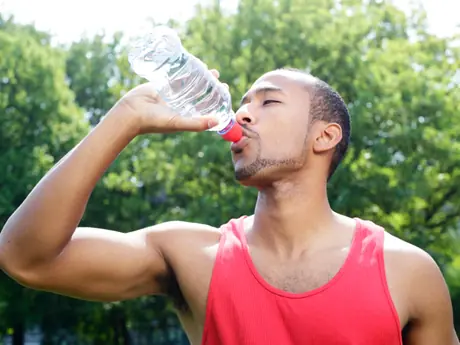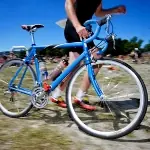For example, freestyle swim technique is a factor that is important to triathlon performance and thus should not be neglected. The form drills that improve freestyle technique most effectively don't do much to improve body composition. So, if you made your training all about shedding excess body fat, you would likely neglect form drills and your triathlon performance would ultimately suffer as a result.
By and large, however, the same training that most effectively enhances performance also has the greatest impact on body composition. Research has consistently shown that endurance athletes perform best when they train at high volume and when most of their training is done at low to moderate intensities.
More: The Perfect Fat-Burning Zone
More specifically, the research suggests triathletes should aim to do close to the maximum volume of swimming, cycling and running that they can do without injury or excessive fatigue. About 80 percent of that training should be completed below lactate threshold intensity—which is roughly the fastest swim, bike or run pace an athlete can sustain for one hour. Ten percent should be done at lactate threshold intensity and 10 percent above lactate threshold intensity.
Low-intensity training is not a virtue in itself. It's beneficial because it allows an athlete to train more without burning out. High volume is the most effective way to enhance endurance performance because it maximizes efficiency. Swimming, cycling and running aren't that different from juggling: The more you do any of them the more efficient your movements become.
Overall training volume is also the primary determinant of how much body fat is lost through training. While you may burn calories faster through high-intensity training, the body cannot handle a lot of that stuff, so the overall fat-burning potential of high-intensity training is limited. On the flipside, although calories are burned more slowly in low- to moderate-intensity workouts, the body can handle exponentially greater amounts of training at these intensities, so the overall fat-burning potential of this type of training is greater.
More: The Myth of the Fat-Burning Zone
We see that the best way to train for both greater performance and improved body composition is a high-volume approach featuring an 80/10/10 intensity breakdown. Unfortunately, most triathletes don't train this way. Research has shown that the typical age-group triathlete does only 50 to 70 percent of his or her training below lactate threshold and 20 to 40 percent at lactate threshold.
If you want to get leaner and go faster, slow down for four out of every five workouts and use the freed-up energy to gently increase your training volume.
More: The Most Common Mistake in Triathlon
 Search for your next triathlon.
Search for your next triathlon.
- 2
- of
- 2
About the Author








Discuss This Article